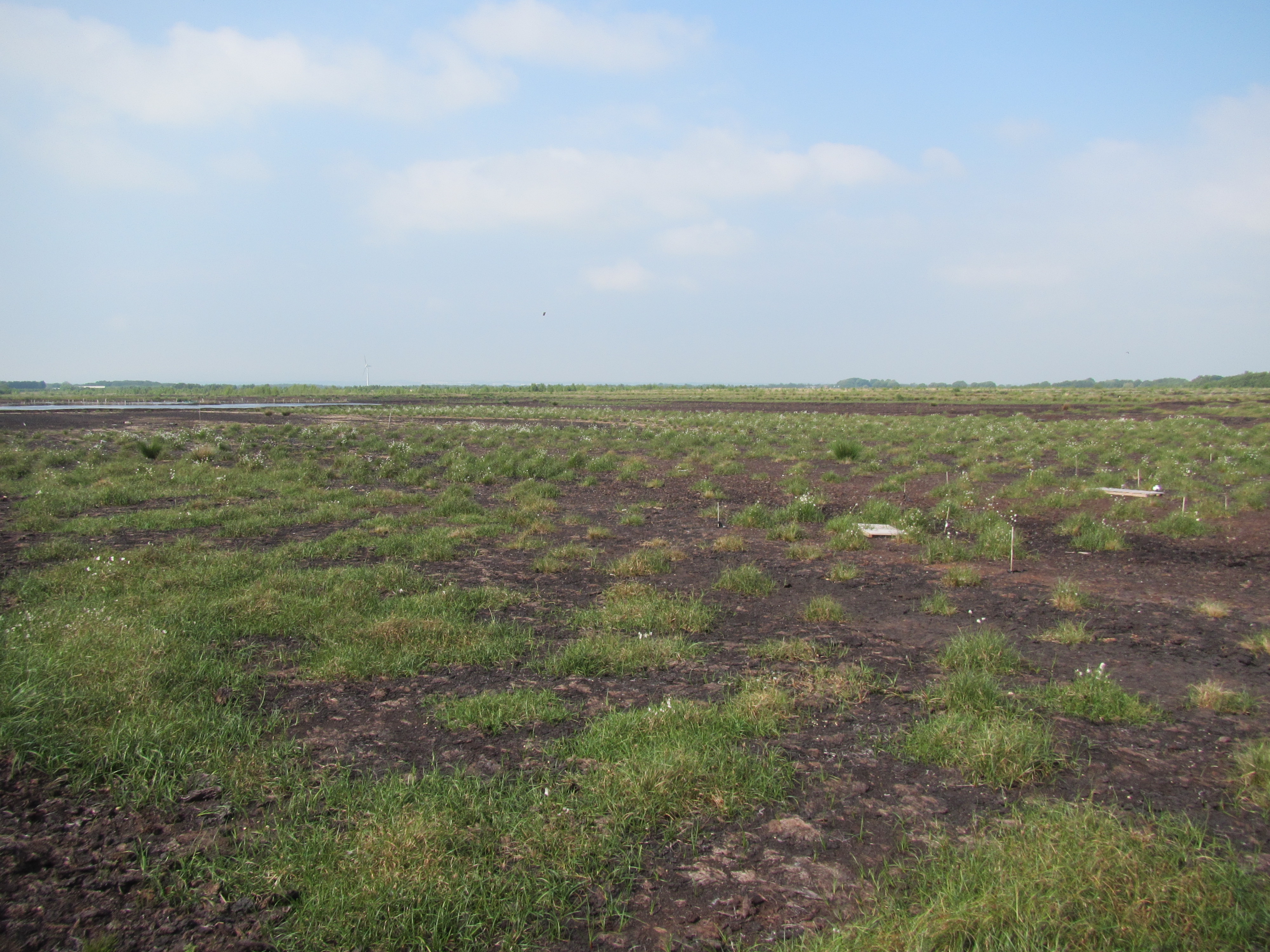
Restoration work in times of COVID: a state of affairs of the UK pilot sites

The Winmarleigh Carbon Farm
After stripping the top layer of grazed grassland, site levelling, bunding into cells, and creating irrigation channels early in 2020, planting with BeadaMoss® Sphagnum plugs was completed in October 2020. The plugs have generally grown well, with a three-fold increase in Sphagnum cover measured in GHG monitoring collars. Vegetation monitoring plots (20) have been established across the site to assess overall growth. One cell has a higher water table than the rest (possibly due to a natural ground water upswell) and so planting has been delayed.
The water levels across the site have generally been within 10 cm of the surface, which compares well to the neighbouring drained, grazed pasture, where water levels are highly variable and regularly drop to 30 - 40 cm below the surface. Chemical analysis of surface peats show that surface-stripping has reduced nutrient and pH levels, creating more favourable conditions for bog vegetation. We have been undertaking a number of measures to control weeds on site, including allowing sheep to graze right up to the edges of the carbon farm, and we are also investigating utilising steam to kill any remaining weeds prior to planting in future work.
GHG data from the carbon farm show very low fluxes of CO2 and negligible methane flux, resulting in a small CO2 emission overall, which is to be expected on what is still a re-wetted but mainly bare peat site. We expect the site to become a sink for CO2 once a full cover of Sphagnum is achieved. A v-notch weir has just been installed and monitoring of aquatic flux is just underway, which will account for any carbon GHG losses from the irrigation channels. Carbon GHG fluxes on the neighbouring grazed pasture are large, dominated by CO2 emission through respiration, resulting in a large CO2 loss, particularly in the warmer, drier months of the year, so establishment of the carbon farm already appears to have been a benefit through avoided CO2 losses.
Little Woolden Moss companion planting pilot
The pilot site was planted by LWT staff and volunteers with groups of Eriophorum species (3:1 E. angustifolium to E. vaginatum) in spring 2020 and BeadaMoss® Sphagnum plugs were planted within the Eriophorum clusters the following autumn. The vascular plants are developing well and a continuous cover is expected by next year. There were, unfortunately, large Sphagnum losses due primarily to bird damage, and a second planting may be attempted when there is more extensive vascular plant cover. The site is gently sloping and due to difficulties controlling high surface water levels on neighbouring areas of the developing restoration site, wave action from flooding damaged perhaps a quarter of the early plant growth, although new E. angustifolium plants are developing from the rhizomes, and we are hopeful this will develop over the summer and be more resilient to any flooding this winter.
The GHG monitoring plots were unaffected by flooding, and data is showing a high uptake of CO2 in vegetated plots through photosynthesis, and a comparatively low emission through respiration, leading to overall CO2 sequestration. Methane emissions are within reasonable limits and do not add significantly to emission factors. Monitoring on bare peat plots indicates a small, steady CO2 emission, as expected. A series of peat cores showed poor quality peat of little more than 1 m in depth overlaying sand and clay, leading to high variability in water table depth, although we expect this to begin to stabilise over time with development of a full cover of bog vegetation.
